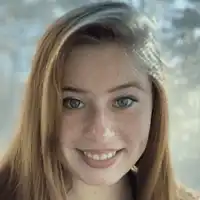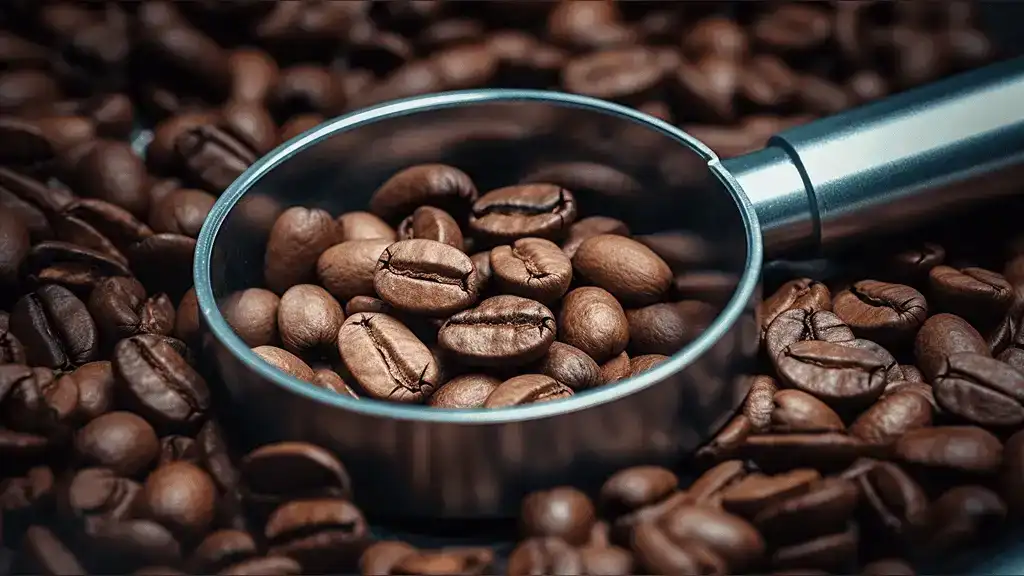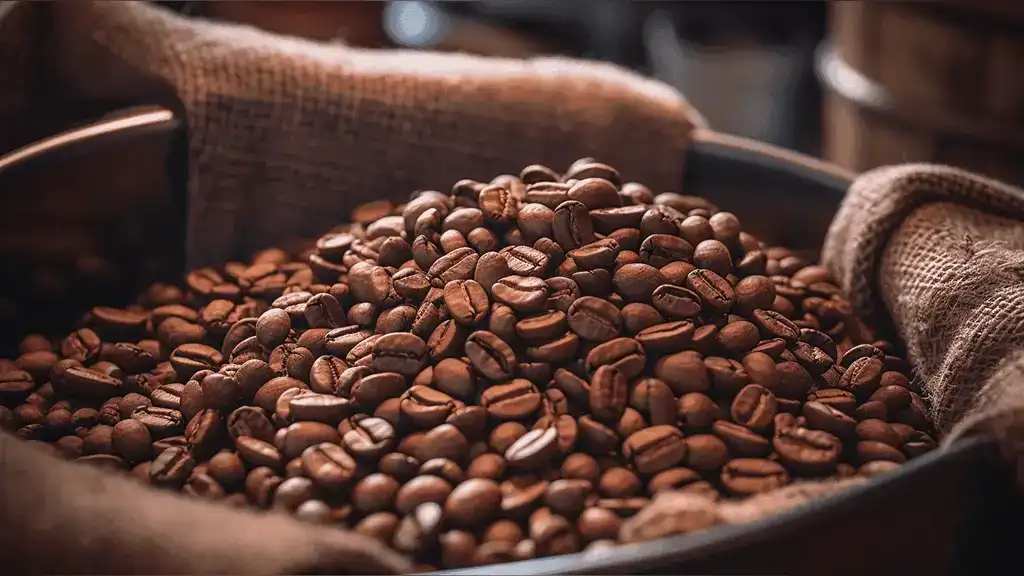Do you know where your morning cup of coffee comes from?
You’ve probably heard about Arabica and Robusta, but have you ever wondered about the origins of Liberica coffee? Its unique flavor and bold characteristics have piqued the interest of coffee enthusiasts worldwide.
But where is this intriguing coffee variety grown, and what are its origins? Understanding the journey of Liberica coffee from its cultivation to your cup unveils a rich tapestry of history and cultural significance.
So, let’s explore the fascinating world of Liberica coffee and the regions where it thrives, shedding light on its captivating origins and the stories woven into each aromatic sip.
As a professional coffee taster with over a decade of experience in the industry, I have had the privilege of exploring coffee plantations around the world and delving into the intricacies of different coffee varieties, including Liberica.
Where is Liberica Coffee Grown?
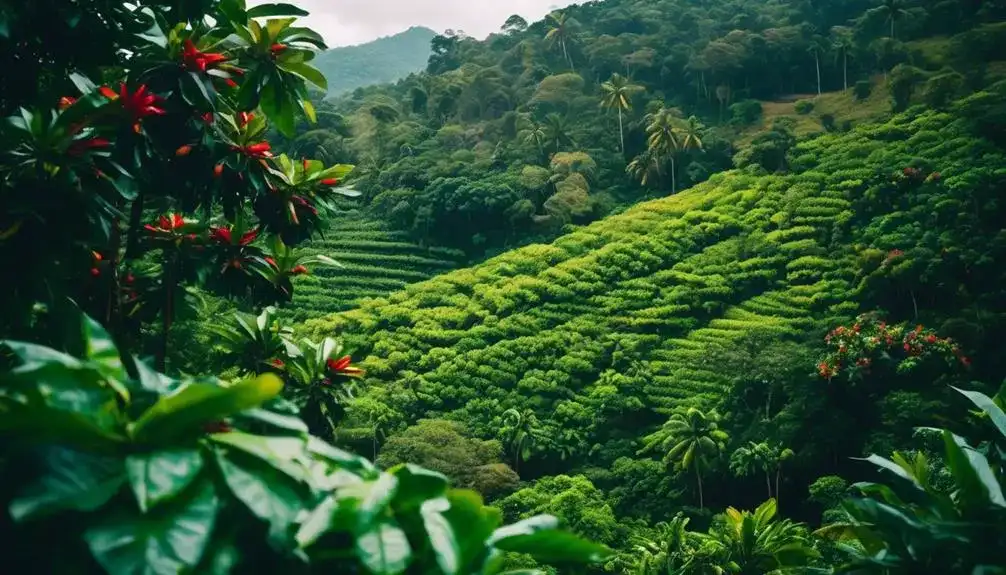
When it comes to Liberica coffee, there are several key regions where this unique coffee bean is grown. In Malaysia, Liberica thrives as the heartland of this coffee variety, while the Philippines has a strong tradition of producing the Barako variety. Indonesia, on the other hand, is also emerging as a significant location for the cultivation of Liberica coffee. Let’s take a closer look at these regions and the unique qualities they bring to the world of coffee.
| Malaysia | Philippines | Indonesia |
|---|---|---|
| Heartland of Liberica | Barako Tradition | Emerging Grounds for Liberica |
Malaysia: The Heartland of Liberica
Malaysia stands as the heartland of Liberica coffee, where the unique and flavorful beans thrive in the country’s rich soil and favorable climate. The cultivation of Liberica coffee in Malaysia dates back to the late 19th century when it was introduced by the British.
Today, Malaysia has become a key player in the production of this rare coffee varietal, with vast plantations spread across regions like the states of Selangor, Perak, and Kedah. The Malaysian government has actively supported the farming of Liberica, recognizing its cultural and economic significance.
While the Philippines and Indonesia also grow Liberica, Malaysia’s commitment to sustainable farming practices and the preservation of traditional cultivation methods sets it apart as a beacon of Liberica coffee production.
For coffee enthusiasts seeking a unique and authentic experience, Malaysia’s Liberica coffee is a true delight.
Philippines: The Barako Tradition
The heartland of Liberica coffee may be in Malaysia, but the Philippines also boasts a rich tradition with its own unique varietal known as Barako.
The Philippines has a deep-rooted coffee heritage, with Barako being an integral part of its legacy. This robust coffee has been a symbol of Filipino tradition for generations, embodying strength and flavor.
Despite facing challenges from the rise of commercial coffee production, there’s been a recent revival of Barako, with local farmers and enthusiasts working to preserve its niche in the coffee world.
The Philippines’ dedication to reviving this heritage coffee showcases a commitment to honoring its traditions and preserving its unique flavors. Embracing Barako not only celebrates the country’s rich coffee culture but also supports local communities and their sustainable farming practices.
Indonesia: Emerging Grounds for Liberica
Emerging as a notable source of Liberica coffee, Indonesia’s lush landscapes and favorable climate provide ideal conditions for cultivating this unique varietal. With its rich volcanic soil and tropical climate, Indonesia has become an emerging player in the production of Liberica coffee, offering a distinct flavor profile that sets it apart from other coffee varieties.
The unique history and origin of Liberica in Indonesia add to its allure, making it a captivating choice for coffee enthusiasts seeking something different. The country’s commitment to preserving the heritage of Liberica reflects its dedication to maintaining the authenticity of this rare coffee bean.
As an emerging force in the world of coffee, Indonesia continues to solidify its position as a key player in the production of this exceptional and distinctive coffee variety.
Beyond the Mainstream: Other Liberica Growing Regions
When it comes to the growing regions of Liberica coffee, you might be surprised to learn about its presence in West Africa, as well as its exploration into new frontiers in Latin America. Additionally, you’ll find Liberica coffee thriving in the global diaspora, demonstrating its adaptability and potential for growth in diverse locations. Below, you can explore the diverse regions where Liberica coffee is cultivated and thriving.
| Liberica Growing Regions | Description |
|---|---|
| West Africa | With its roots in West Africa, Liberica coffee is a traditional crop in countries like Liberia, Sierra Leone, and Ivory Coast. The region’s unique climate and soil contribute to the distinct flavor profile of Liberica beans. |
| New Frontiers: Liberica in Latin America | Latin America has recently witnessed an emergence of Liberica coffee cultivation, particularly in regions such as the Philippines, Malaysia, and Indonesia. The expansion into Latin America presents new opportunities for Liberica to establish itself in the global market. |
| Liberica in the Global Diaspora | Liberica coffee has found a place in the global diaspora, with its cultivation extending to countries outside of its traditional growing regions. This diaspora includes areas like the Caribbean, where the coffee has been embraced and integrated into local agricultural practices. |
Liberica’s Presence in West Africa
Exploring the lush landscapes of West Africa reveals the thriving presence of Liberica coffee, offering a unique and distinctive flavor profile to coffee enthusiasts. In this region, Liberica thrives alongside Arabica and Robusta, contributing to the rich tapestry of coffee production.
West Africa’s fertile soils and ideal climate create an excellent environment for coffee agriculture. The origin of Liberica in West Africa adds to the diverse and vibrant coffee production in the region.
New Frontiers: Liberica in Latin America
Liberica coffee has found new frontiers in Latin America, expanding its presence beyond the mainstream growing regions.
In this region, the focus on sustainability and biodiversity aligns with the origins of Liberica coffee in Africa.
Latin America’s embrace of specialty coffee offers new opportunities for Liberica to flourish, providing a unique and diverse option for coffee enthusiasts seeking freedom in their choices.
Liberica in the Global Diaspora
Beyond the mainstream growing regions, Liberica coffee has found its way to other diverse and distinctive locations, showcasing the adaptability and resilience of this unique coffee variety.
In tropical climates around the globe, local ecosystems have historically embraced Liberica, allowing it to thrive and develop its own unique characteristics. Its global diaspora highlights the coffee’s ability to flourish in varying environments, making it a fascinating addition to the rich tapestry of coffee cultivation.
The Journey of Liberica Coffee: From Farm to Cup
So, you’re ready to learn about the journey of Liberica coffee from the farm to your cup.
Let’s start by exploring the challenges and practices involved in cultivating Liberica.
Then, we’ll take a look at the production process of this unique coffee variety.
Finally, we’ll discuss the renaissance of Liberica coffee.
Here’s what you can expect to discover:
- The unique challenges and practices involved in cultivating Liberica
- The intricate production process of Liberica coffee
- The resurgence and renewed interest in Liberica coffee
Cultivating Liberica: Challenges and Practices
Cultivating Liberica comes with its own set of challenges, but with the right practices, it can be a rewarding endeavor. To successfully navigate the cultivation process, you need to consider factors such as climate, soil, and pest control.
Here are some key points to keep in mind:
- Climate plays a crucial role in the growth of Liberica coffee plants. It thrives in warm and tropical climates, with temperatures between 24-29°C (75-84°F). The right amount of rainfall is also important, with an average of 1500-2000 mm (59-79 inches) per year.
- Soil quality greatly impacts the flavor and yield of Liberica coffee beans. Liberica prefers well-draining soil with a pH level between 6-7.5. It is important to conduct soil tests and amend the soil with organic matter or fertilizers as needed.
- Implementing sustainable farming practices is essential for the long-term viability of Liberica cultivation. This includes reducing chemical inputs and implementing organic farming methods. It is also important to conserve water and promote biodiversity on the farm.
- Pest control is a significant challenge in maintaining healthy Liberica crops. Common pests include coffee berry borer, nematodes, and various fungal diseases. Integrated pest management techniques, such as regular monitoring, proper pruning, and the use of biological controls, can help manage these pests effectively.
- The unique flavor profile of Liberica adds to its appeal in the specialty coffee market. It is known for its bold and distinct taste, with flavor notes that can range from floral and fruity to woody and smoky. This uniqueness makes Liberica a sought-after coffee variety among specialty coffee enthusiasts.
Challenges in Cultivating Liberica
With the unique environmental demands and susceptibility to diseases, cultivating Liberica coffee presents a set of challenges that require careful management and expertise.
- Altitude: Liberica thrives at lower altitudes, making suitable regions rare.
- Pests: The coffee is susceptible to pests, requiring sustainable pest management practices.
- Diseases: Liberica is vulnerable to certain diseases, necessitating proactive disease prevention measures.
- Climate Change: Adapting to changing climate conditions is crucial for successful cultivation.
- Exotic Nature: Its exotic nature demands specialized farming techniques.
Liberica’s Role in Sustainable Coffee Farming
In sustainable coffee farming, Liberica plays a crucial role due to its unique flavor profile and potential for resilience in challenging environments. Its origin in diverse landscapes makes it adaptable to varying conditions, aiding growers in sustainable farming practices.
Liberica’s resilience promotes environmental stability, supporting the journey from plantation to cup. By embracing Liberica, growers contribute to a sustainable coffee industry, ensuring the future of coffee cultivation while respecting the environment.
The Production Process of Liberica Coffee
The journey of Liberica coffee from farm to cup begins with the meticulous harvesting of the distinctive, large coffee cherries. This harvest is a labor of love, as the beans are carefully handpicked to ensure only the finest cherries are selected.
The fertile soil and ideal climate play a crucial role in nurturing this unique cultivar, allowing it to thrive and develop its exceptional flavors. The coffee plants are constantly monitored for any signs of leaf rust, ensuring the quality and purity of the beans.
Once harvested, the cherries undergo a meticulous processing method to preserve their unique characteristics. Throughout this process, traceability is maintained, allowing for complete transparency from the farm to your cup.
This commitment to quality and traceability ensures that every sip delivers the rich, distinctive essence of Liberica coffee.
The Renaissance of Liberica Coffee
Experiencing a renaissance, Liberica coffee beckons you on a journey from farm to cup, where its unique flavors and rich history await discovery.
The origins of Liberica coffee trace back to West Africa, and now, this rare species is gaining popularity once again. As farmers recognize its potential, they’re cultivating Liberica with care, ensuring its distinct taste reaches the market.
This resurgence presents opportunities for both coffee enthusiasts and the communities that grow it. By embracing Liberica, you support the livelihoods of farmers and contribute to the preservation of a coffee tradition with a compelling history.
The renaissance of Liberica coffee signifies not just a revival, but a celebration of freedom in choice, taste, and the empowerment of those who cultivate it.
Brewing Liberica Coffee: Techniques and Recommendations
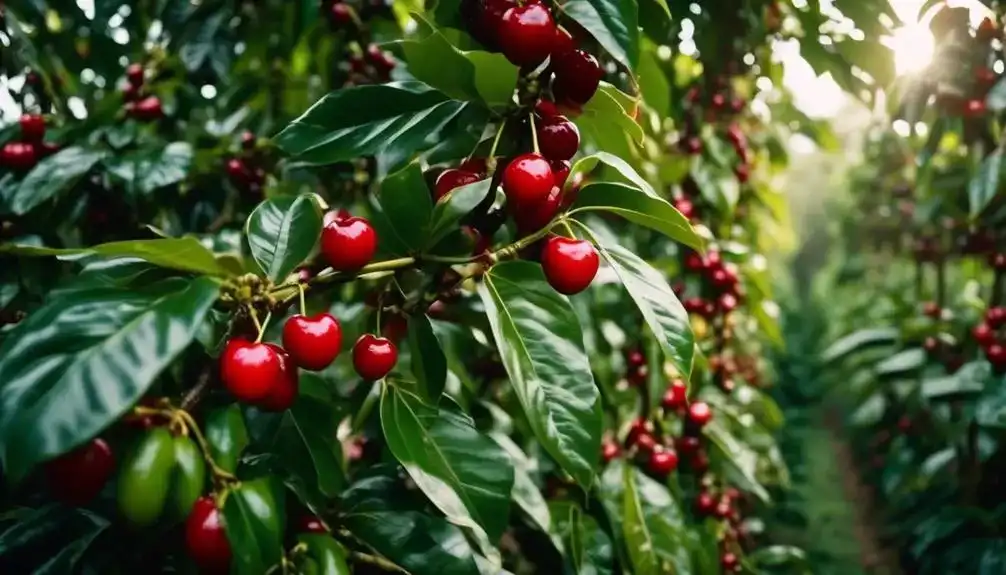
When brewing Liberica coffee, it’s important to consider the unique characteristics of this rare bean. To ensure the best flavor and experience, you should try out different brewing methods and techniques. Remember to keep these tips in mind:
- Use a coarser grind to prevent over-extraction
- Experiment with different water temperatures to find the ideal brewing range
- Consider using a French press for a full-bodied brew
- Try pour-over methods for a clean and nuanced flavor profile
- Don’t overlook the importance of using freshly roasted beans
Unique Brewing Methods for Liberica Coffee
Discovering unique brewing methods for Liberica coffee can elevate your coffee experience to new heights, offering a rich and distinctive flavor profile.
When brewing Liberica coffee, consider its origins and unique characteristics. This varietal is known for its large, irregularly shaped beans and is typically roasted to a medium or dark level to enhance its complex flavors.
For a fully developed taste, try the wet process, which involves removing the cherry’s outer skin before drying the beans. Alternatively, the dry process, where the cherries are dried with the beans inside, can intensify the coffee’s fruity and floral notes.
Experiment with different brewing techniques such as pour-over, French press, or cold brew to find the method that accentuates Liberica coffee’s exceptional qualities, delivering a liberating and indulgent coffee experience.
From Farm to Cup: The Journey of Liberica Coffee
To understand the journey of Liberica coffee from farm to cup, it’s essential to grasp the unique brewing techniques and recommendations that accentuate its exceptional qualities, delivering a liberating and indulgent coffee experience.
Liberica beans, known for their distinctively bold and fruity taste, undergo a meticulous process from the moment they’re harvested at their origin. The beans are carefully fermented to bring out their rich flavors before being exported to coffee enthusiasts around the world.
Upon import, the industry’s experts meticulously roast and grind the beans, ensuring that the unique characteristics of Liberica are preserved.
When brewing Liberica coffee, it’s important to embrace its freedom of taste by experimenting with different brewing methods such as pour-over or French press, allowing you to savor the full-bodied and liberating experience that Liberica coffee offers.
Regions Known for High-Quality Liberica Coffee
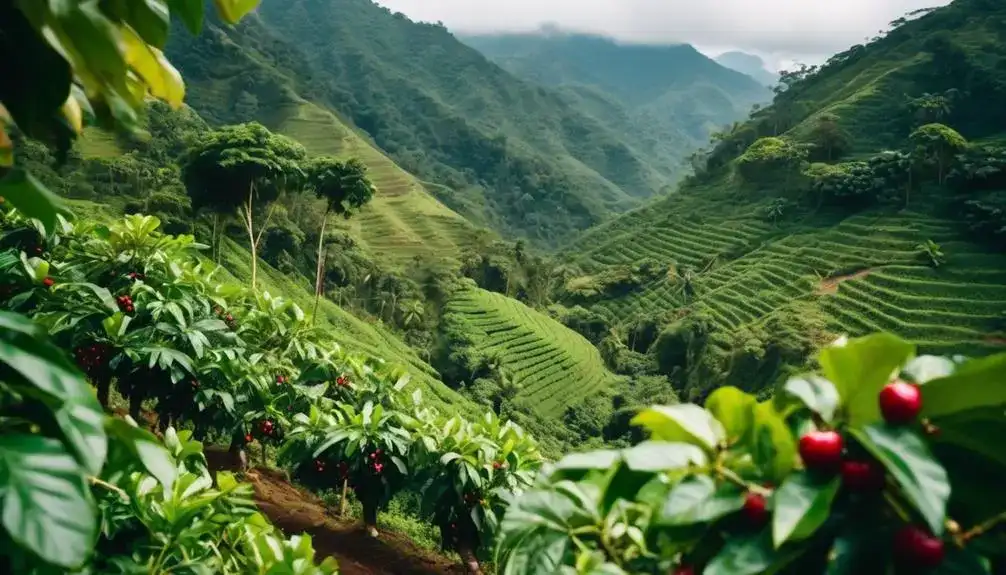
When it comes to high-quality Liberica coffee, there are specific regions that are renowned for producing premium beans. These regions include:
- The Philippines
- Malaysia
- Liberia
- Ivory Coast
- Sri Lanka
Exploring these regions will give you insight into the unique growing conditions and flavors that contribute to the exceptional quality of Liberica coffee.
Identifying Premium Liberica Coffee Beans
The premium Liberica coffee beans known for their exceptional quality are typically found in specific regions known for producing high-quality coffee. When identifying premium Liberica beans, look for single-origin beans grown in regions with optimal climate and soil conditions.
These beans are often organically cultivated, ensuring the highest quality and purity. When cupping Liberica coffee, you’ll notice its distinctive floral aroma, setting it apart from other coffee varieties.
To guarantee the finest quality, consider seeking out beans sourced through direct trade relationships, promoting fair compensation for farmers and sustainable agricultural practices. This direct trade approach ensures that you’re getting the best Liberica beans while supporting ethical and environmentally friendly practices.
Cultural and Historical Significance
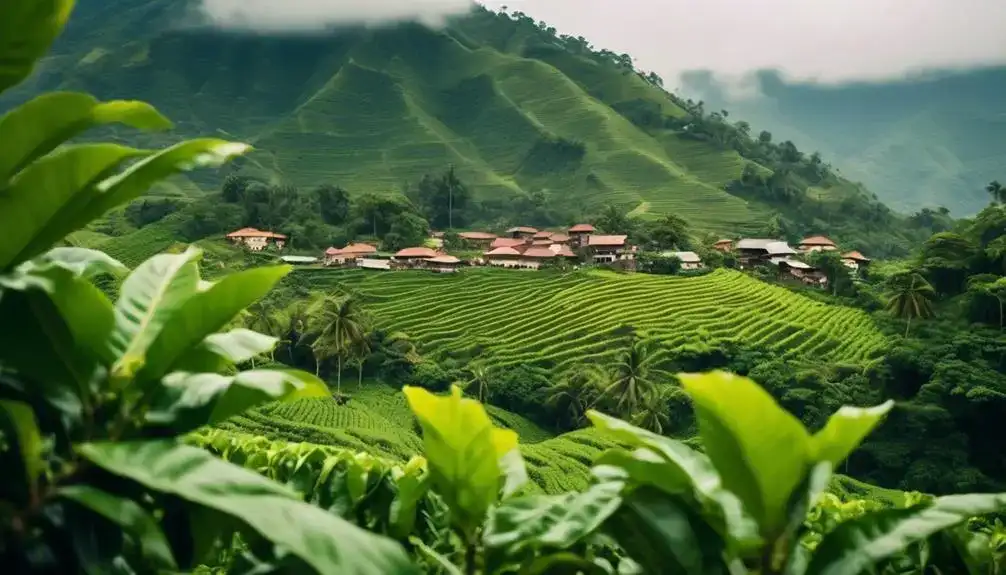
When it comes to Liberica coffee, its cultural and historical significance can’t be overstated. This unique coffee variety has played a significant role in shaping the cultural heritage of the regions where it’s grown, as well as in the global diaspora.
As you consider the impact of Liberica coffee, keep in mind these key points:
- The role of Liberica coffee in local traditions and ceremonies
- Its historical significance in trade and global commerce
- The influence of Liberica coffee in the culinary world
- The cultural symbolism attached to Liberica coffee in various societies
- The ways in which Liberica coffee has been integrated into different cultural practices and rituals
The Cultural Heritage of Liberica Coffee
With a rich and diverse cultural heritage, Liberica coffee holds significant historical significance in the regions where it’s cultivated.
The origins of Liberica coffee trace back to the forests of West Africa, where it has been an integral part of the cultural identity for generations.
The cultivation of shade-grown Liberica coffee has been a tradition among smallholder farmers, who’ve preserved its cultural heritage through sustainable farming practices.
The cooperative nature of its production has also played a crucial role in maintaining the cultural significance of Liberica coffee, fostering a sense of community and shared heritage.
The unique flavor profile of Liberica coffee is a testament to its cultural roots, offering a taste that reflects the rich history and traditions of the regions where it’s grown.
Liberica Coffee in the Global Diaspora
Cultivated in various regions, Liberica coffee retains its profound cultural and historical significance as it spreads across the globe. Its origins in West Africa have led to a global diaspora, with Liberica coffee now being cultivated in countries such as the Philippines, Malaysia, and Liberia.
The impact of Liberica coffee in these regions has been significant, influencing the cultural and historical landscape of these areas. As it gains awareness and popularity in the mainstream coffee market, its presence continues to expand, connecting different cultures through a shared love for this unique coffee variety.
The heartland of Liberica coffee may have been in West Africa, but its global diaspora has allowed it to become a symbol of cultural exchange and diversity, enriching the coffee traditions of various countries.
Conclusion
So, now you know where Liberica coffee is grown.
From the lush forests of the Philippines to the vibrant farms of Malaysia and beyond, Liberica coffee has a rich and diverse history.
As you sip on your next cup of this unique and bold brew, you’ll be transported to the exotic lands where it all began, savoring the cultural and historical significance of this exceptional coffee.
Cheers to the journey of Liberica coffee!





